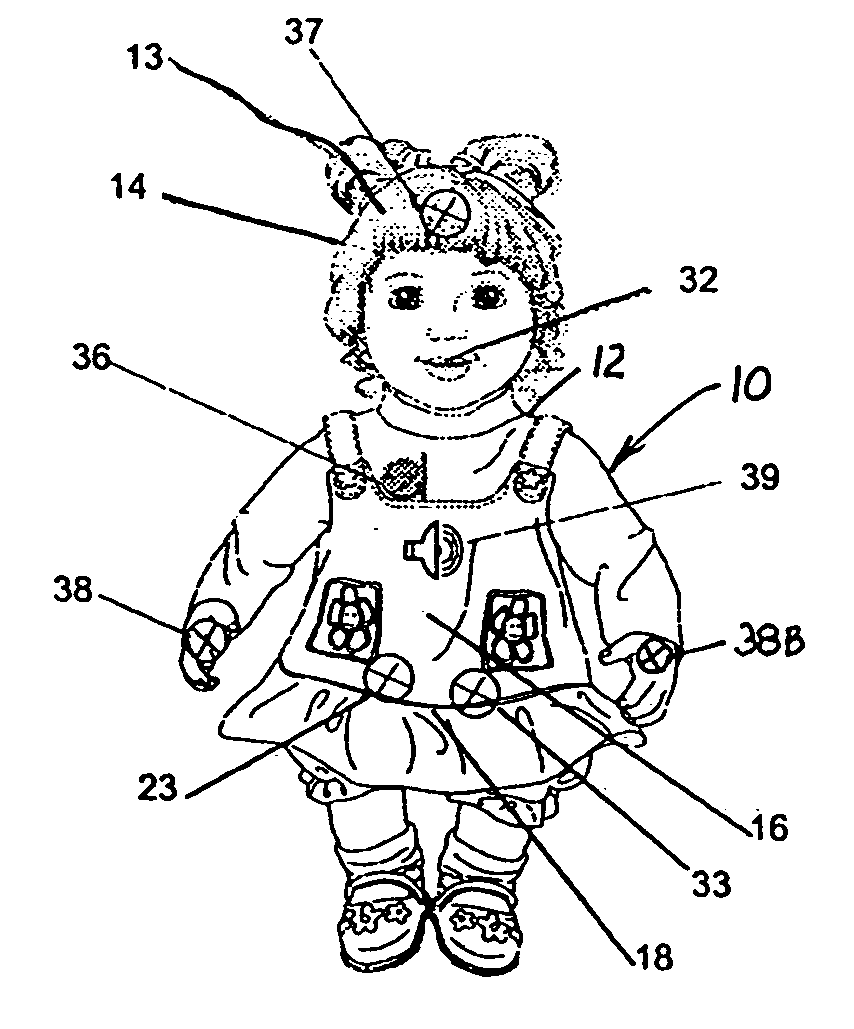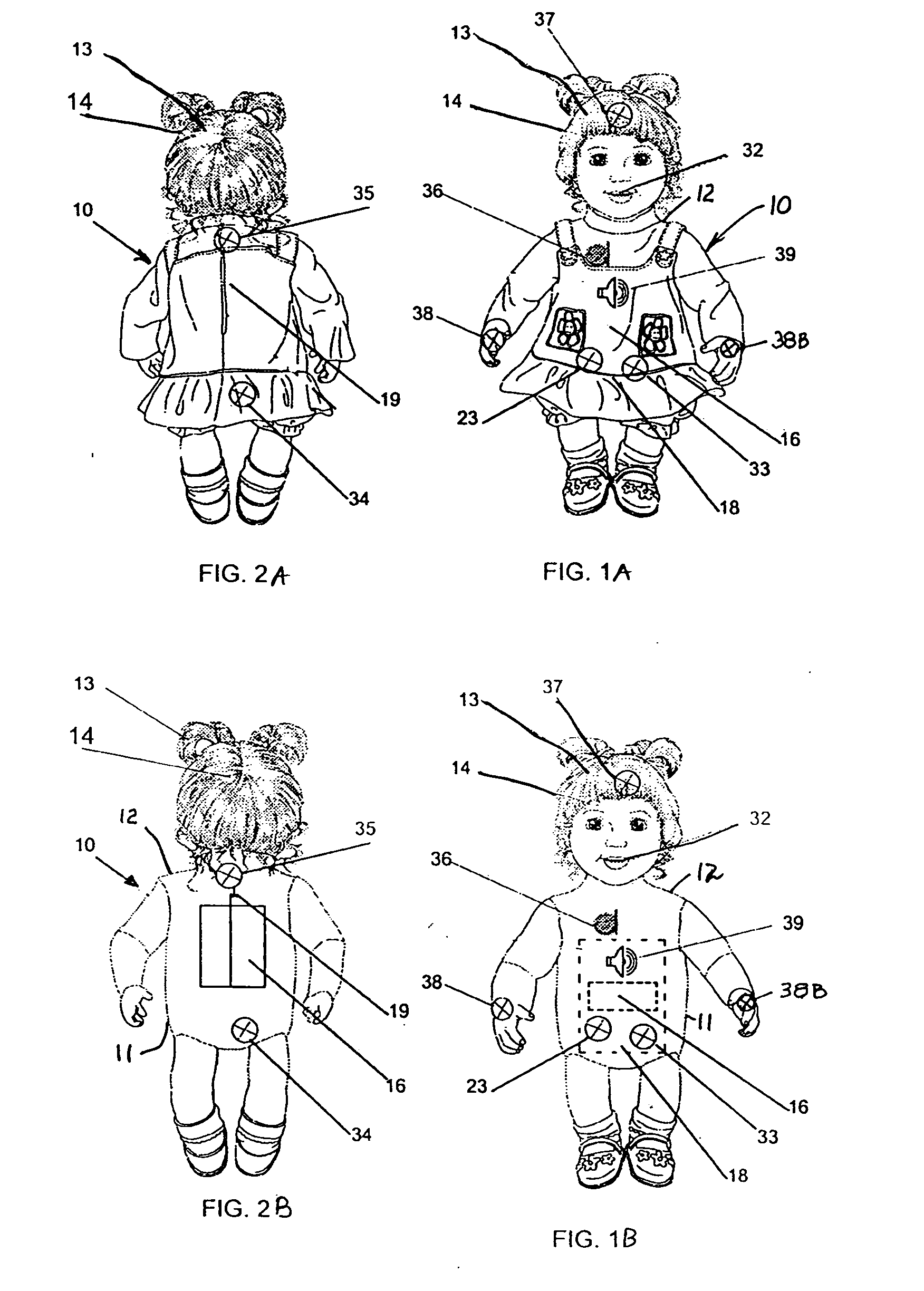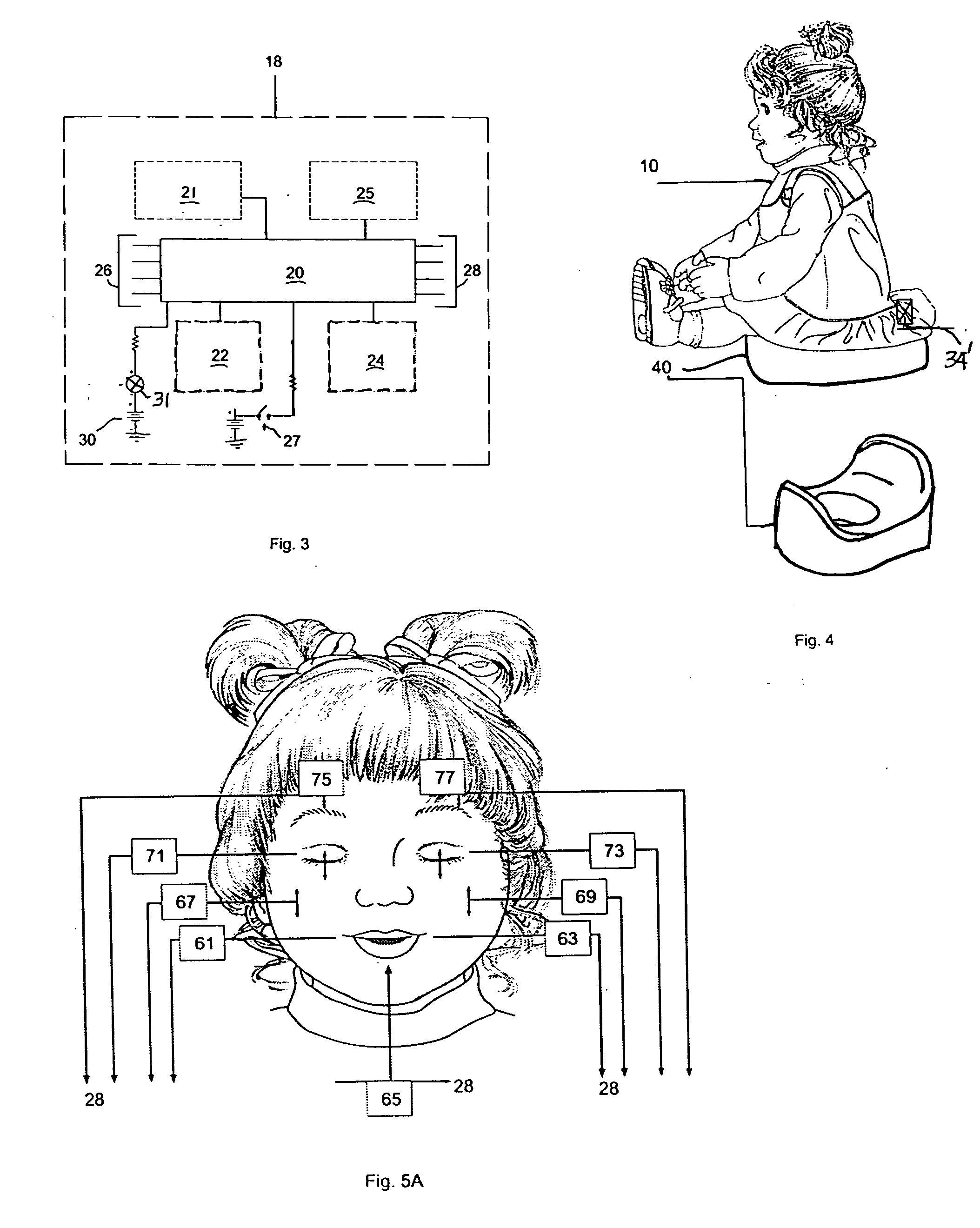Interactive Hi-Tech doll
- Summary
- Abstract
- Description
- Claims
- Application Information
AI Technical Summary
Benefits of technology
Problems solved by technology
Method used
Image
Examples
Embodiment Construction
[0045] The description that follows presents the best mode presently contemplated for carrying out the invention. Both the general principles of the invention and specific details for a practical embodiment of the invention are disclosed. Those disclosures should not be taken as limiting the scope of the invention, which is best determined from the numbered claims appended to the end of this specification. The invention is described in reference to a doll that emulates a living child. The doll interacts with a player and implements a virtual character, and, in the preferred embodiment, carries out the daily activities of an active child or incidents in a child's activities. It is understood that other characters both real and fictitious and even other figures and objects may be implemented in accordance with the invention, without departing from the scope of the invention.
[0046]FIGS. 1A and 1B are pictorial front views of one embodiment of the doll 10, dressed and undressed, respec...
PUM
 Login to View More
Login to View More Abstract
Description
Claims
Application Information
 Login to View More
Login to View More - R&D
- Intellectual Property
- Life Sciences
- Materials
- Tech Scout
- Unparalleled Data Quality
- Higher Quality Content
- 60% Fewer Hallucinations
Browse by: Latest US Patents, China's latest patents, Technical Efficacy Thesaurus, Application Domain, Technology Topic, Popular Technical Reports.
© 2025 PatSnap. All rights reserved.Legal|Privacy policy|Modern Slavery Act Transparency Statement|Sitemap|About US| Contact US: help@patsnap.com



